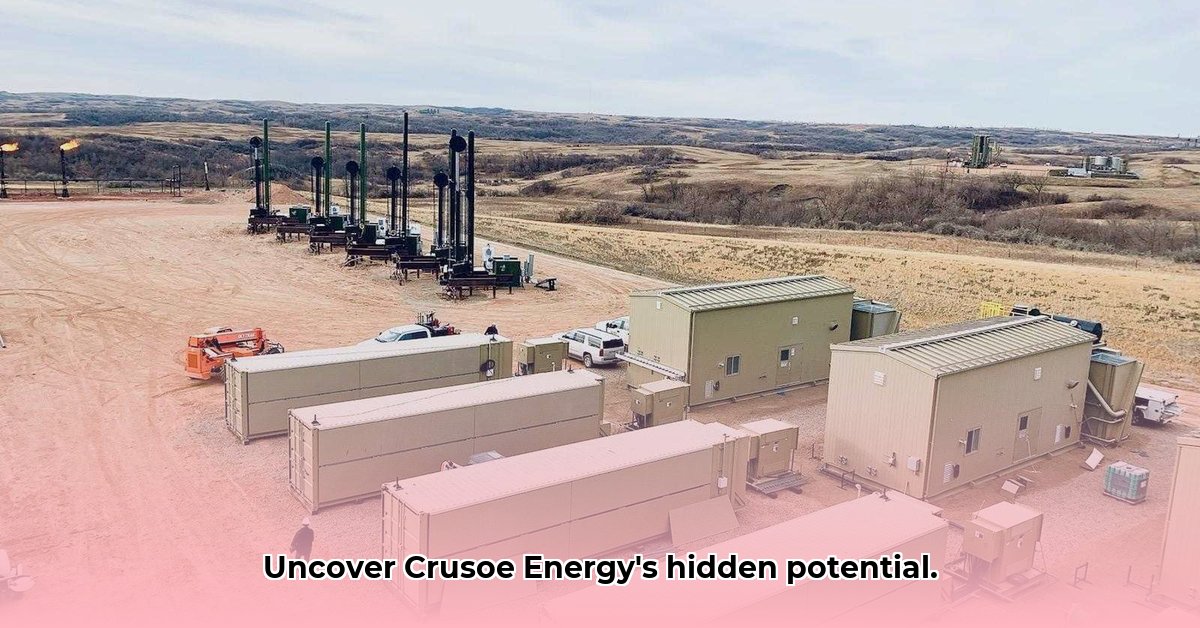
Crusoe Energy's Business Model: Harnessing Wasted Energy for Data Centers
Crusoe Energy operates in the burgeoning sustainable technology sector, employing a unique approach to data center operation. The core of their business model involves leveraging otherwise wasted energy, primarily flared natural gas from oil and gas extraction, to power their high-performance computing infrastructure. This strategy offers a dual benefit: reducing methane emissions, a potent greenhouse gas, and creating a cost-effective power source for their data centers. However, translating this innovative concept into sustainable, large-scale profitability presents significant challenges. The company's success hinges on several key factors, including securing reliable sources of stranded energy, managing complex infrastructure logistics, and navigating a highly competitive market. Is this a truly green solution or simply greenwashing? That's a question that requires deeper examination.
How can Crusoe Energy consistently secure access to sufficient quantities of stranded energy to fuel its expanding operations, especially considering fluctuating energy market prices?
Financial Transparency and Investment Risks
Assessing Crusoe Energy's financial health presents a significant challenge due to a lack of complete public financial disclosures. Reports on funding secured vary considerably across different sources, hindering a clear understanding of their financial stability and long-term prospects. This lack of transparency presents a major risk for potential investors. What does this opacity reveal about the company's commitment to financial accountability? Thorough due diligence, including independent financial analysis, is crucial before committing capital.
The company's significant funding rounds, though reported in varying amounts across sources, point to significant investor interest. However, can this substantial investment be translated into consistent profitability and sustainable growth?
Strategic Partnerships and Market Competition
Crusoe Energy has established partnerships with major players in the technology industry, including Oracle and Microsoft. These collaborations enhance the credibility of their technology and potentially open doors to new markets and resources. However, this reliance on a few key partners also introduces significant vulnerabilities. A shift in partner strategy or the deterioration of these partnerships could negatively impact Crusoe Energy's operations and financial outlook. The company finds itself competing in a rapidly growing but intensely competitive market for AI infrastructure services, dominated by established firms with significantly greater resources. Can Crusoe Energy effectively compete for market share in this challenging landscape?
How well-positioned is Crusoe Energy to scale operations and sustain profitability while competing against better-funded established players in the “neocloud” market?
Environmental Impact: A Comprehensive Assessment
While Crusoe Energy's mission to reduce greenhouse gas emissions through flared gas utilization is commendable, a comprehensive environmental impact assessment is necessary. The company's efforts to mitigate methane emissions are significant, but the overall environmental footprint of their data centers requires a deeper analysis. This should consider energy consumption for cooling, transportation, and equipment manufacturing—factors that can offset the environmental benefits of using stranded energy. Research on the full lifecycle of their operations is crucial to understanding the net environmental impact. Is their environmental benefit truly net-positive, or is their impact significantly diminished by other environmentally harmful activities?
What is the net environmental impact of Crusoe Energy's data centers when considering the complete lifecycle of their operations and all greenhouse gases involved?
A Risk-Reward Analysis of Crusoe Energy Stock
| Factor | Potential Upside | Potential Downside |
|---|---|---|
| Sustainable Business Model | Reduced methane emissions, attraction of ESG investors | Scaling challenges, regulatory risks, volatile energy markets |
| Strategic Partnerships | Expanded market access, technological advancements | Dependence on partners, potential conflicts of interest |
| Market Opportunity | Rapid growth in AI infrastructure and “neocloud” sector | Intense competition, market instability |
| Financial Transparency | Potential for future increased transparency and disclosures | Current lack of transparency, hindering investor confidence |
| Environmental Impact | Significant potential for emission reductions | Potential for unforeseen negative environmental impacts |
Conclusion: Due Diligence is Critical
Crusoe Energy presents a high-risk, high-reward investment prospect. While their innovative business model offers significant potential and aligns with growing environmental, social, and governance (ESG) concerns, substantial uncertainty surrounds its long-term viability. Prospective investors must conduct thorough due diligence, including independent financial analysis and a complete life-cycle assessment of their environmental impact. Continuous monitoring of market developments and regulatory changes is also crucial for informed decision-making. The situation remains fluid; careful evaluation is paramount before investing.